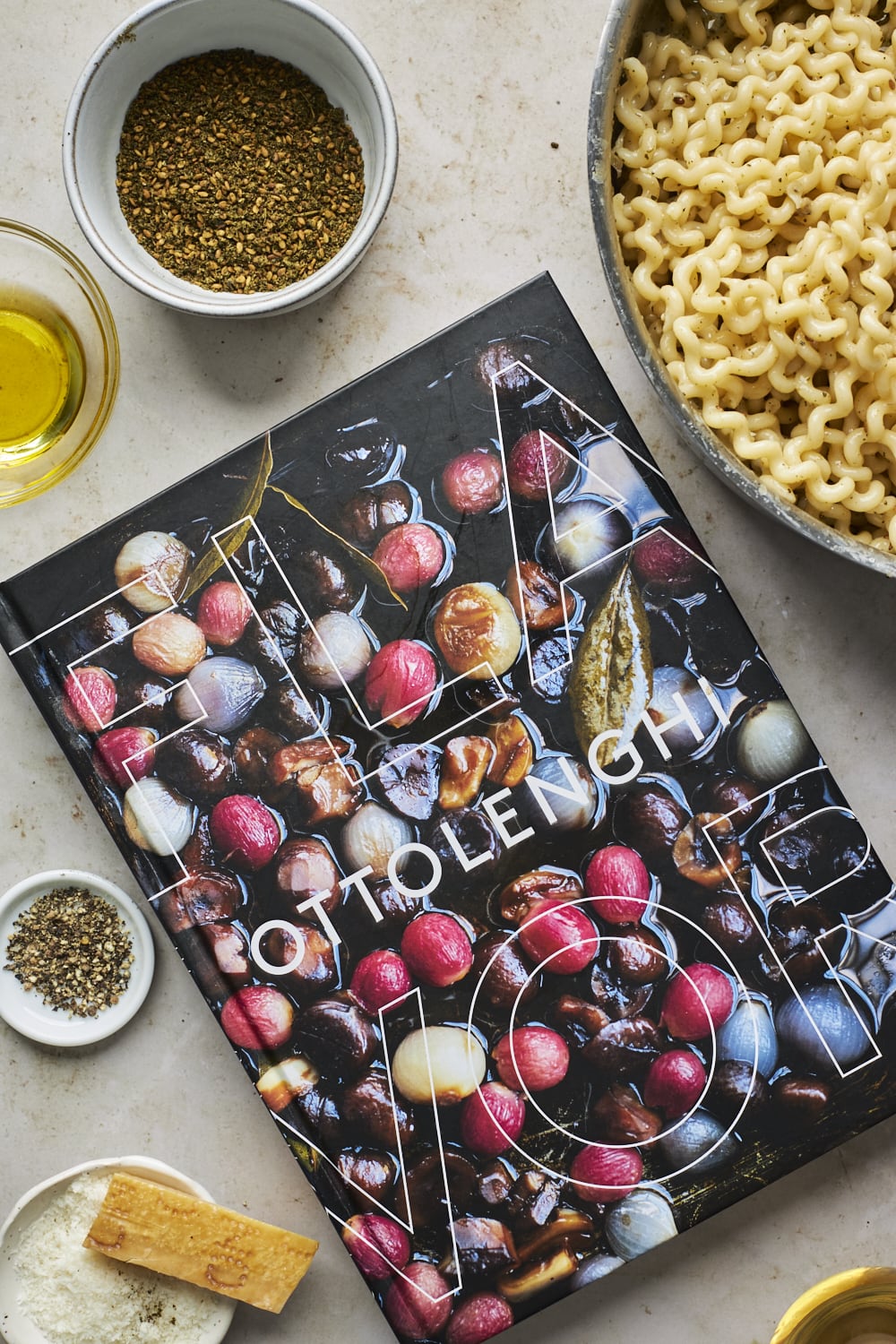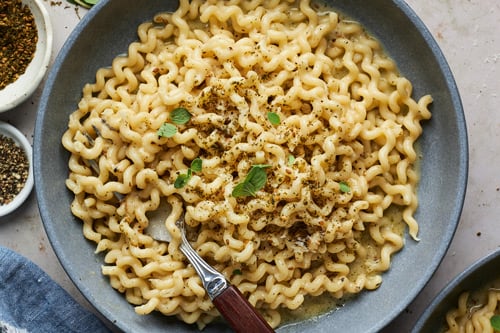Za'atar Cacio e Pepe
This totally delicious and fun take on cacio e Pepe is from Ottolenghi Flavor. Cacio e Pepe is a simple Roman pasta dish which translates to cheese and pepper and pronounced ca-cho ee pepe. It is made with simple ingredients traditionally pasta, cheese and black pepper. Its creamy, salty with that distinct peppercorn flavor that is less about heat and more about piney woody flavours. There are many variations out there and today I’m sharing Ottolengi’s recipe which has the same basic component with a za’atar twist (Middle Eastern spices). Without taking away from the simplicity of the dish, za’atar fits the flavour profile beautifully adding some herby nuttiness that goes hand in hand with the pepper and cheese infused rich sauce. This creamy sauce or creaminess of it (or Cremina) is not achieved from adding extra fats to the dish like cream but from the combination of the cheese and the starchy pasta water. It is easy to make and this recipe (like all cacio e Pepe recipes) gives clear direction that should be followed to the T to get a creamy not clumpy cacio e Pepe every time.
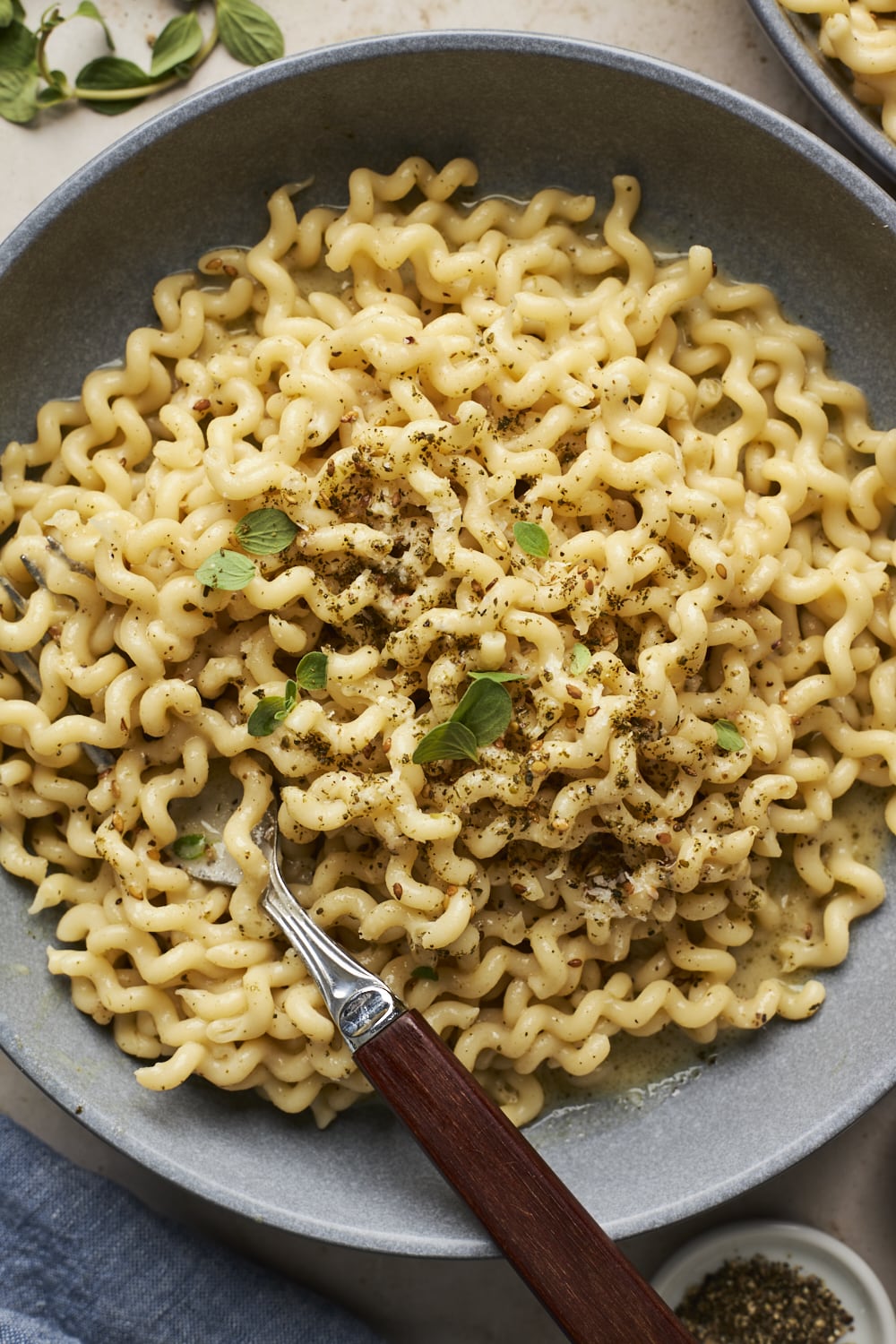
About the book
Flavor by Ottolenghi is another popular book by Ottelenghi offers up some pretty amazing recipes. This time Yotam Ottolenghi has teamed up with Ottolengi Test Kitchen’s Ixta Belfrage to create more than 100 innovative and delicious plant based recipes. It is a very veggie focused book (although I chose a pasta to feature - ha the love of pasta always reigns) that break down the fundamentals of cooking in to 3 elements: Process, Pairing and Produce - the book is actually split up into those three sections which is a fascinating way to categorize the recipes I think. So for Process its broken into sections - Charring, Browning, Infusing, and Aging - basically different ways to prepare foods to unlock their flavours, For Pairing: Sweetness, Fat, Acidity, Chile Heat - showing us great ways to dial up the flavours of a dish or a particular food simply by the pairings within a dish, Produce: Mushrooms, Aliums, Nuts and Seeds, Sugar-fruit and Booze - where we use the produce/veggies itself to carry a whole dish, not only due to how they are prepared or paired with but also with what is going on within. The final sections of the book are Flavor Bombs - which I personally love, basically a pantry of homemade condiments that can be used with any dishes, and finally at the end of the book it all gets tied together in the Meal Suggestions and Feasts. This section lists the many recipes suggested for one pan dishes or under 30 min, Ready in an hour, low effort high impact recipes, make ahead meals, and different feast split up into times of day and cultural themed feast. This is such great feature that I love to use because sometimes you would like to see some suggested recipes that work together if you are pulling together a meal for a feast or you want to see all the quick and easy recipes together from the book. All in all this is another hit of a book by Ottoleghi and I am happy I got to receive a copy of it sent to me and gifted by Appetite By Random House. Grab your copy here.
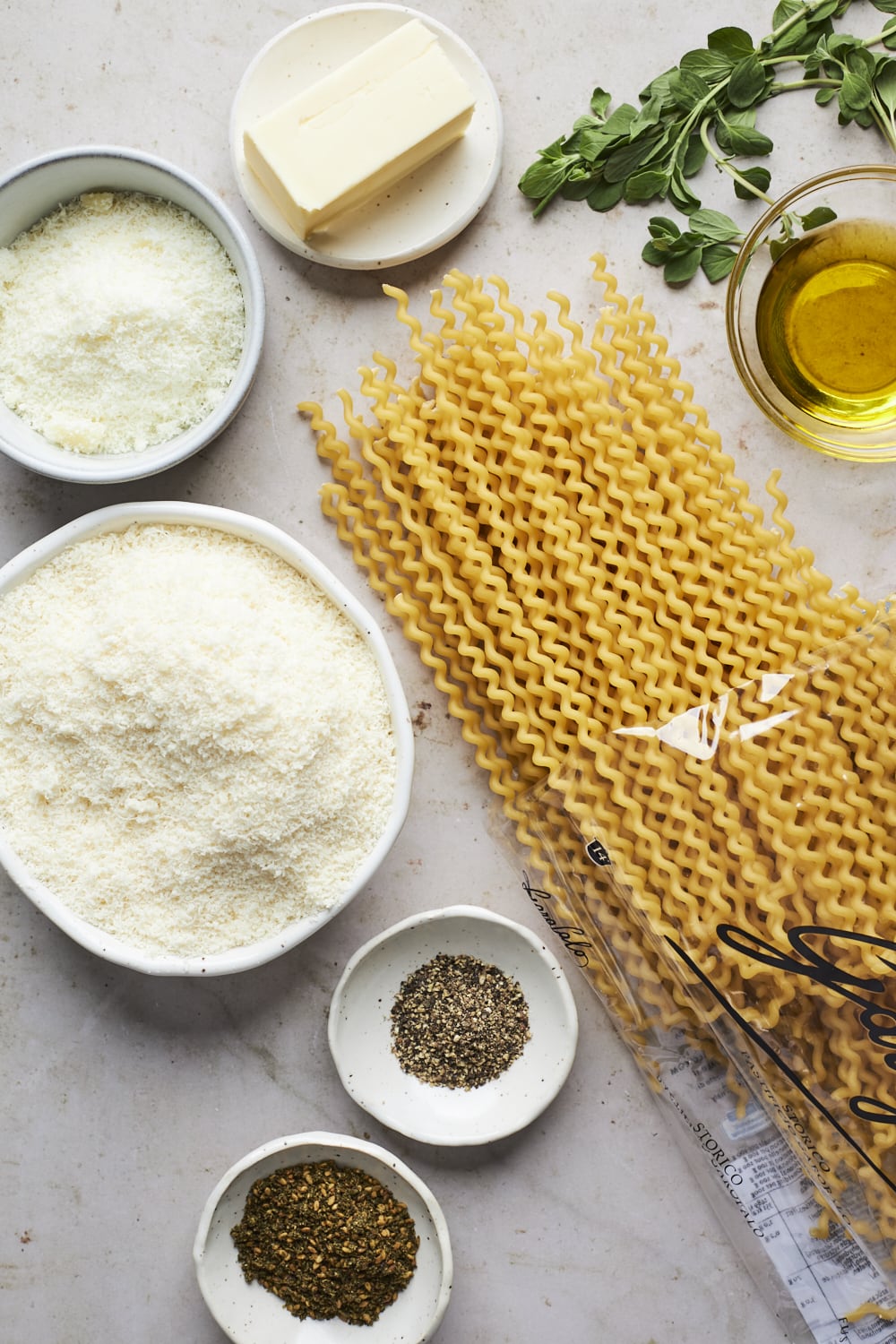
Za’atar cacio e pepe ingredients
- Pasta - spaghetti is traditional pasta to use but bucatini is what the recipe calls for but I thought it would be fun to use a long fusilli - the key to a successful cacio e Pepe is to use a very starchy pasta - slow dried pasta if possible for best result - more correctly called bronze-die extruded pasta
- Cheese - this recipe calls for a blend of parmesan cheese and pecorino - but feel free to go more traditional with all pecorino Romano - use Pecorino Romano that is freshly grated using the finest grate for a silky sauce - I like to use a microplane grater
- Pepper - use whole peppercorn and grind them coarsely yourself for best flavour results
- Butter - not traditional is a cacio e Pepe but this recipe calls for it which helps the whole ‘cremina’ process happen
- Olive Oil - is drizzled on after and is optional
- Za’atar - za’atar is a middle eastern spice blend generally a combination of dried oregano, thyme, and/or marjoram, with sumac, and toasted sesame seeds
- Marjoram - the recipe calls form fresh marjoram as an optional way to garnish and finish off the dish
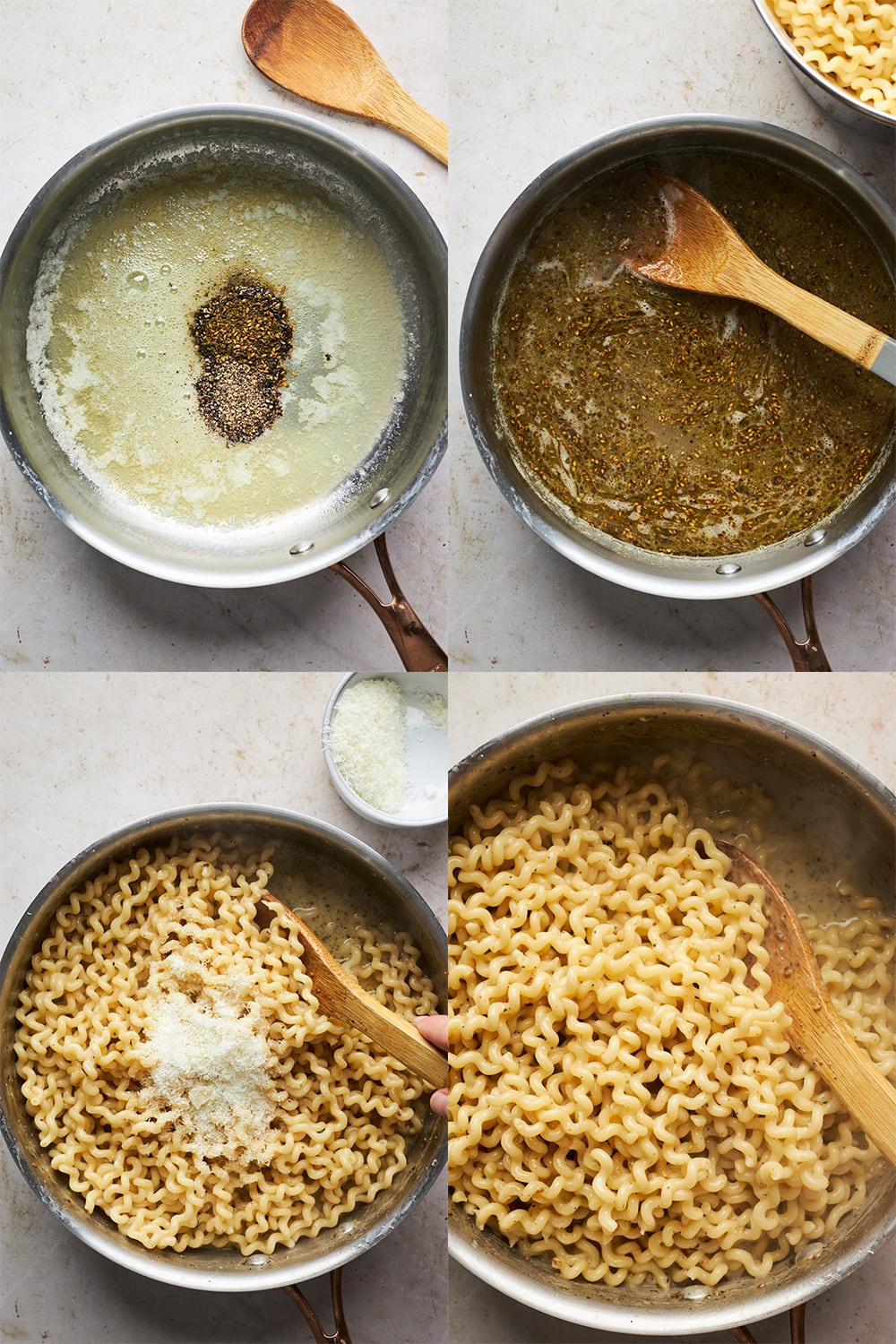
How to make za’atar cacio e pepe recipe
- First things first - PREPARE all your ingredients measuring them grating them and having them all readily on hand (this recipe comes together very quickly)
- BOIL pasta in specified amount of water in shallow pot or deep pan until al dente
- DRAIN pasta reserving all the PASTA WATER
- Melt butter then add the za’atar and black pepper and COOK for a 1 minute until fragrant
- Add the pasta water to pan and SIMMER until slightly reduced
- Add the pasta and STIR continuously keeping the heat to a light simmer not a boil
- Add the cheese in batches STIRRING CONTINUOUSLY so that it melts evenly and creates a silky sauce together with the starchy pasta water and the pasta
- Remove from heat, plate and ENJOY IMMEDIATELY
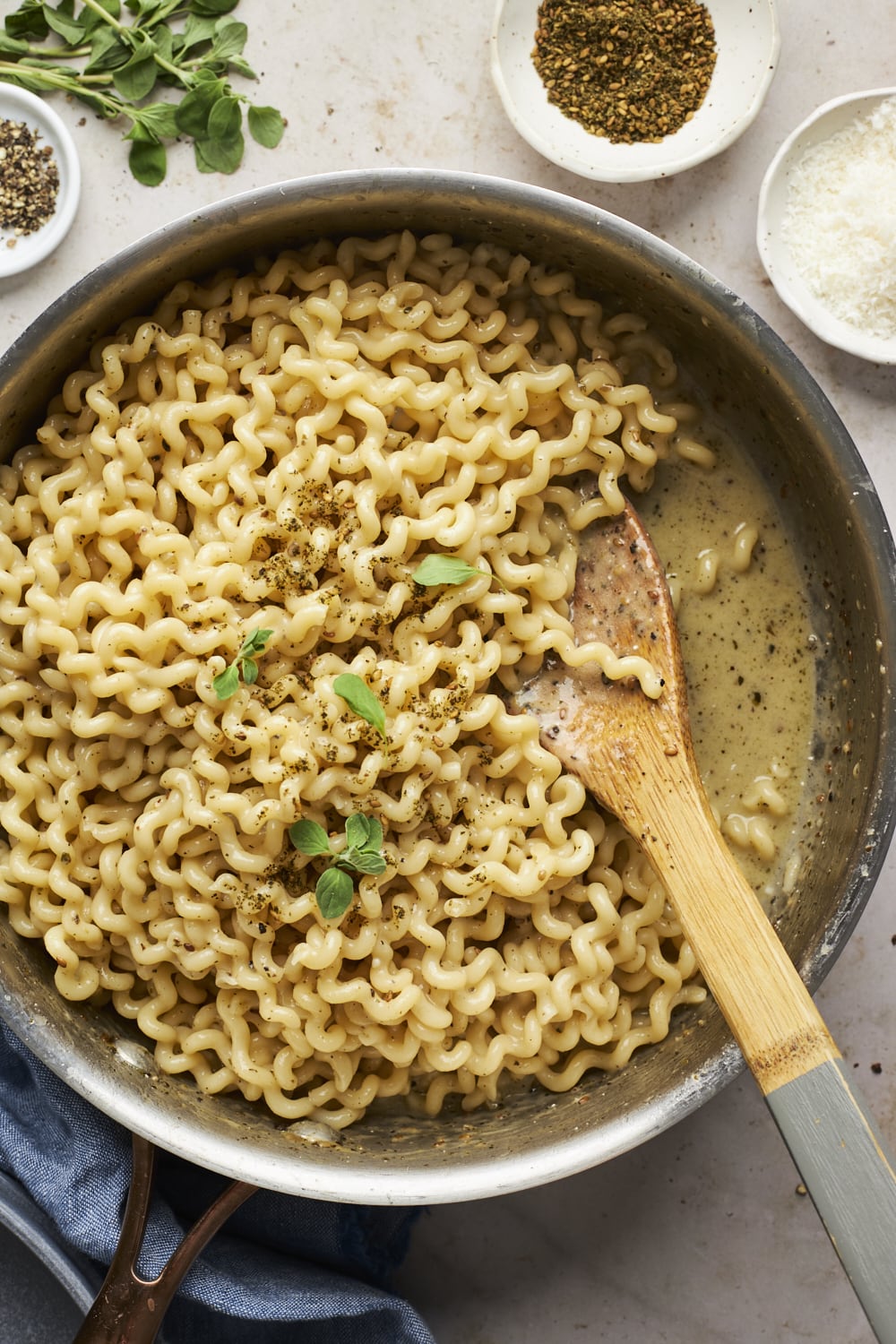
Tips for making cacio e pepe perfect every time
- Use a wide pan and little water to cook the pasta is essential because it ensures there is a lot of starch in the water, which is the key to getting the sauce to emulsify.
- Grate the Parmesan and pecorino as finely as possible, and keep them separated to make sure they melt happily into the sauce. I use a microplane to grate mine
- Adding cheese in gradually will help it melt seamlessly
- Have everything measured out before you begin cooking; the sauce comes together very very quickly so its essential to have everything on hand and ready to go
- Do not drain off the pasta cooking water! Pasta starch is key to creating a silky smooth Cacio e Pepe sauce. The starchy water helps with melting the cheese, emulsifying the sauce, and binding the black pepper to the pasta.
- Do not use ready grated cheese - make sure to grate your own for best results
- Use a very starchy pasta - slow dried pasta if possible for best result - more correctly called bronze-die extruded pasta
- Use whole peppercorns and grind them yourself for best flavour
- Dont salt water as liberally as you normally would when cooking the pasta as the cheese will add white a bit of saltiness to the dish
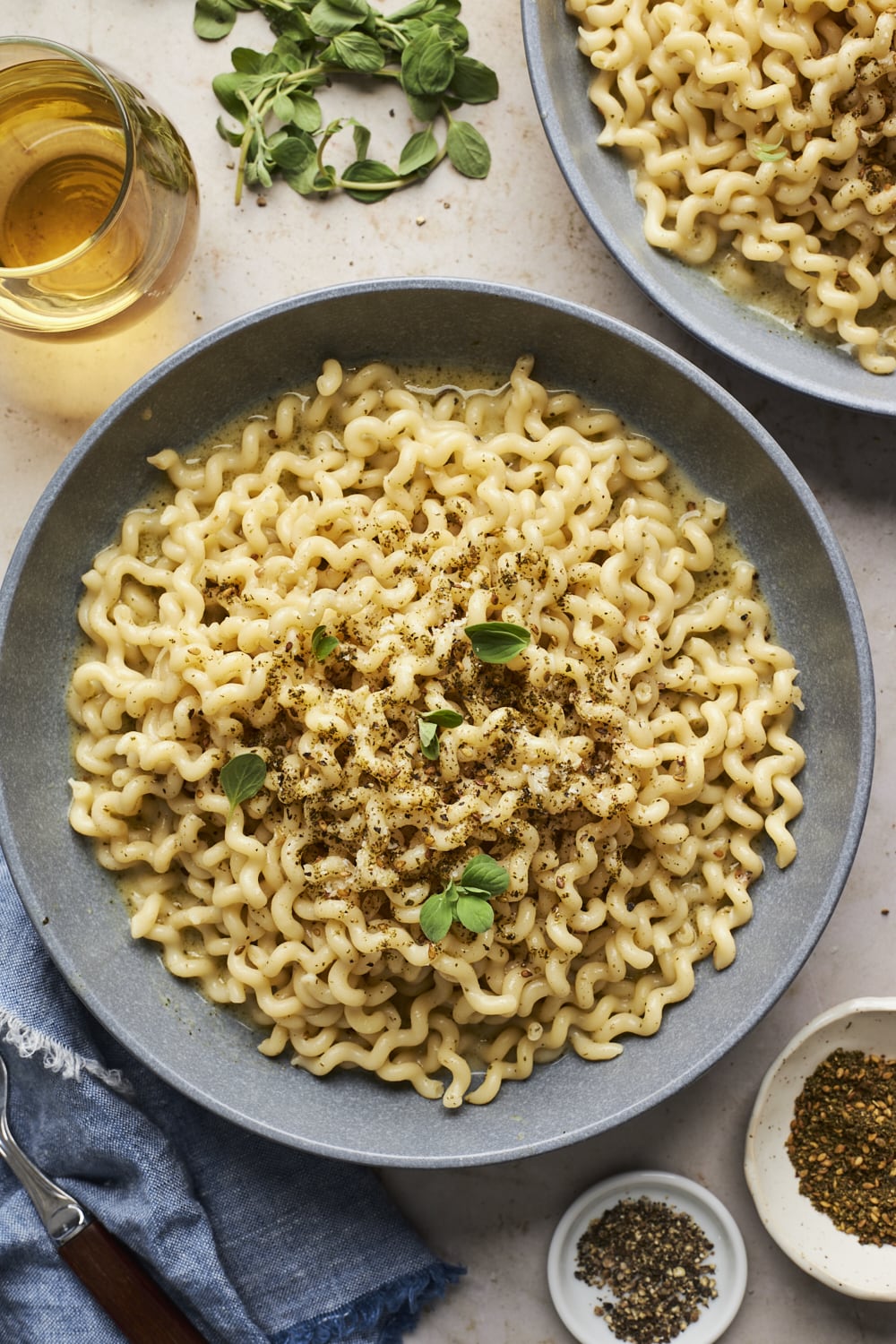
More simple pasta recipes you will love:
Recipe
Ingredients
- Salt
- 14 oz/400g dried bucatini (or other long pasta, cooking time adjusted if necessary)
- ¼ cup/50g unsalted butter
- 1 tablespoon za’atar, plus 1½ teaspoon
- 2 teaspoons black pepper
- 4½ oz/130g Parmesan, very finely grated (approx 2 cups)
- 1 oz/30g pecorino, very finely grated (approx ¼ cup)
- 7½ teaspoon olive oil
- 2 teaspoons whole marjoram leaves (optional)
Directions
- Bring 5½ cups/1.3L of water to a boil in a wide saucepan on medium-high heat, then season with ¾ tsp salt. Add the bucatini and cook for 9 minutes (or per package instructions) until al dente, stirring every now and then so they don’t stick together or to the bottom of the pan, and to ensure they are submerged. Drain Or remove pasta with tongs, reserving all the cooking pasta water (you should have about 2¼ cups of water /520ml-if not, top up with a little hot water). Set pasta aside
- Melt the butter in a large, high-sided, nonstick sauté pan on high heat until bubbling, then add the 1 tbsp za’atar and pepper and cook for 1 minute, stirring, until fragrant.
- Add the reserved cooking water, bring to a rapid boil, and cook for 5 minutes, until silky and reduced a little.
- Add the pasta and stir vigorously into the sauce. Keep the pan on the burner and keep the sauce at a low simmer not a boil
- Add the Parmesan in two batches, continuing to stir vigorously as you go and waiting until the first half has melted before adding the next.
- Once the Parmesan has all melted, add the pecorino, continuing to stir until it has also melted and the sauce is smooth and silky.
- Transfer the pasta to a lipped platter pasta bowl and finish with the olive oil if desired, marjoram (if using), remaining 1½ tsp za’atar, and a small pinch of salt.
- Serve at once with extra grated cheese if desired
